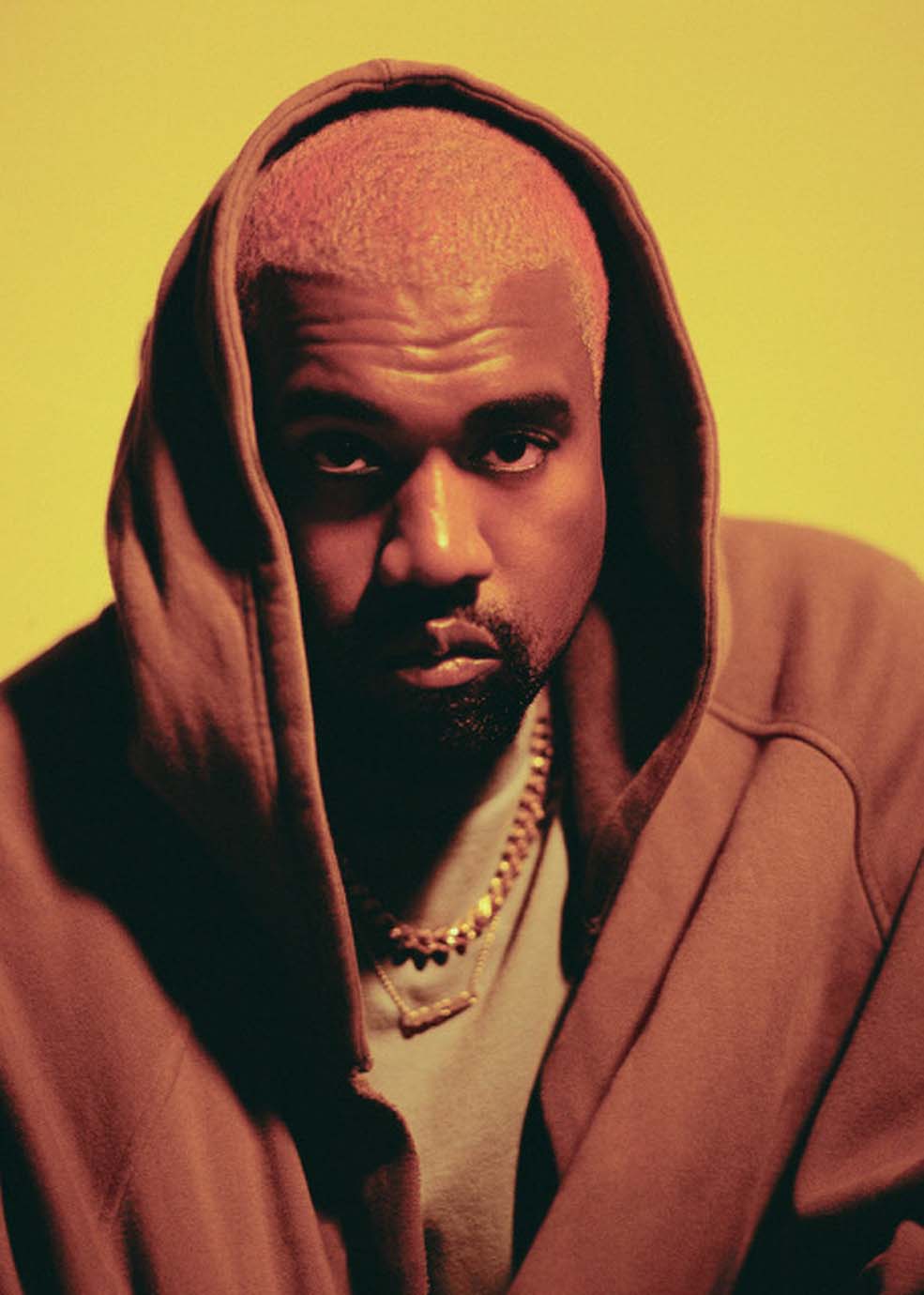
For this year’s Whitney Biennial, Heji Shin wanted to exhibit her portraits of Kanye. The curators who had invited her, however, were more keen on her Babies series. Eventually they agreed to include both: Shin’s photographs of babies emerging gloopy, bloody purple and screaming from their mothers are prominently displayed on the fifth floor, while her pictures of Kanye are hidden away in the basement, which isn’t even listed as one of the Biennial’s floors, between the coat check and the bathrooms. The basement, she notes, is traditionally considered a space of psychological repression. But then the whole show seemed to her to have been curated with a lot of anxiety about inadvertently offending anybody.
Shin’s Kanye pictures had already come under a lot of criticism following their debt at Kunsthalle Zürich last year, presumably because of the rapper’s scattershot tweeting and friendship with Trump. They’re lush and intimate but also fairly straightforward portraits of one of the most photographed men alive. If Shin had been commissioned to take them for a magazine, nobody would have minded, and there wouldn’t have been any uproar. So why do images like these become politicized when they are on the wall of a museum? Is it because she’s chosen to take them of her own volition? Because today’s art world can sometimes be less tolerant than the culture at large? Because of a belief (which she doesn’t personally subscribe to) in art’s great power to seduce and so potentially corrupt a society? Where does the difference lie between studio photography and artistic provocation?

Born in Seoul to Korean parents, Shin grew up in Hamburg, later began and then quit a photography program there (like Kanye, she’s a college dropout), moved to Berlin, and found a job taking low-key portraits for a German economics magazine in the 2000s. Art came later, around the same time she moved to New York eight years ago, and fashion later still, only a few years ago. Like Wolfgang Tillmans and Juergen Teller before her, she’s a photographer from Germany working around the intersection of art and fashion. However, while those guys like to mix everything up, Shin makes a clear distinction between the kinds of photographs she takes for different contexts, and sometimes plays with that distinction to create an effect—as with her exhibitions of no-frills Kanye pictures. Likewise, while most of her fashion work is reasonably conventional, she’ll take a more conceptual approach when she wants to: most notoriously with her Eckhaus Latta Spring 2017 advertising campaign featuring pixelated images of young couples having real sex.
Shin relishes the challenge of organizing improbable shoots. “I’m interested in projects that I don’t find very possible,” she says. “Then you see how far you can get. With Kanye, I never thought that he would ever reply to me. With photographing the mothers, I didn’t think it was possible.” She likes to take risks with her subject matter and approach as well. To be an artist, she tells me, you have to have some meanness, some aggression. You can’t worry about pleasing others or doing what’s right—that is the opposite of what an artist should do. “You should actually do what people think is wrong. That’s what I’ve always thought. That’s what I like. I’ve never thought of trying to do what other people think art is.”
Her approach may have landed her Kanyes by the toilets, but she actually finds this more amusing than frustrating. It’s important to keep a sense of humor about everything. “I think I’m never very completely sincere. Or I never go into something in a purely serious way,” says Shin. “There always has to be something to smile a little bit about, or laugh about.” Her pictures of childbirth, which I find rather uplifting and beautiful are, for her, somewhat grotesque, and violent, and also kind of “funny, how these babies don’t look like human beings.” Everything she does is done with levity, and a willingness to laugh at the world, even at its most miraculous moments, because life is not a tragedy, but a farce.










 in your life?
in your life?

